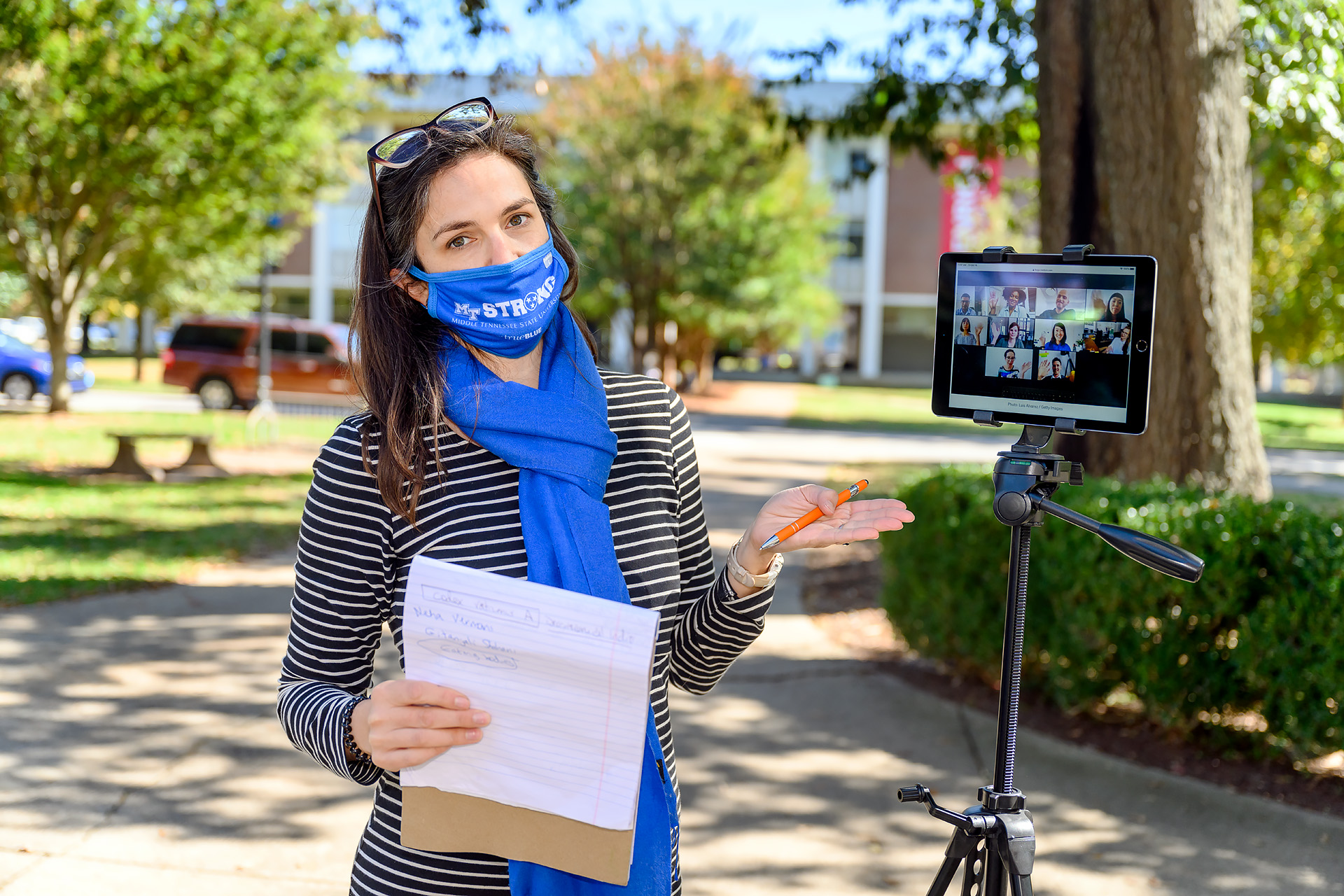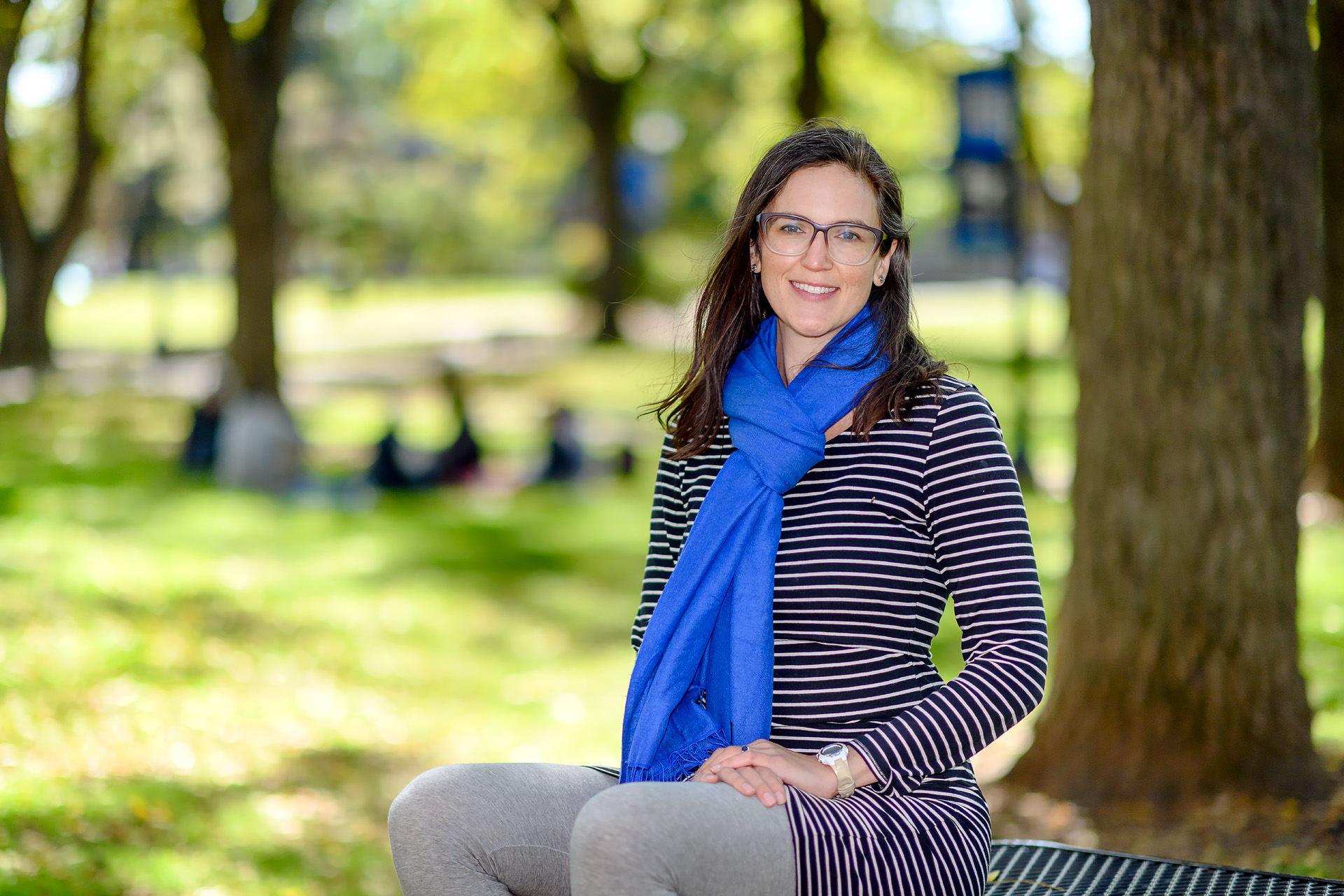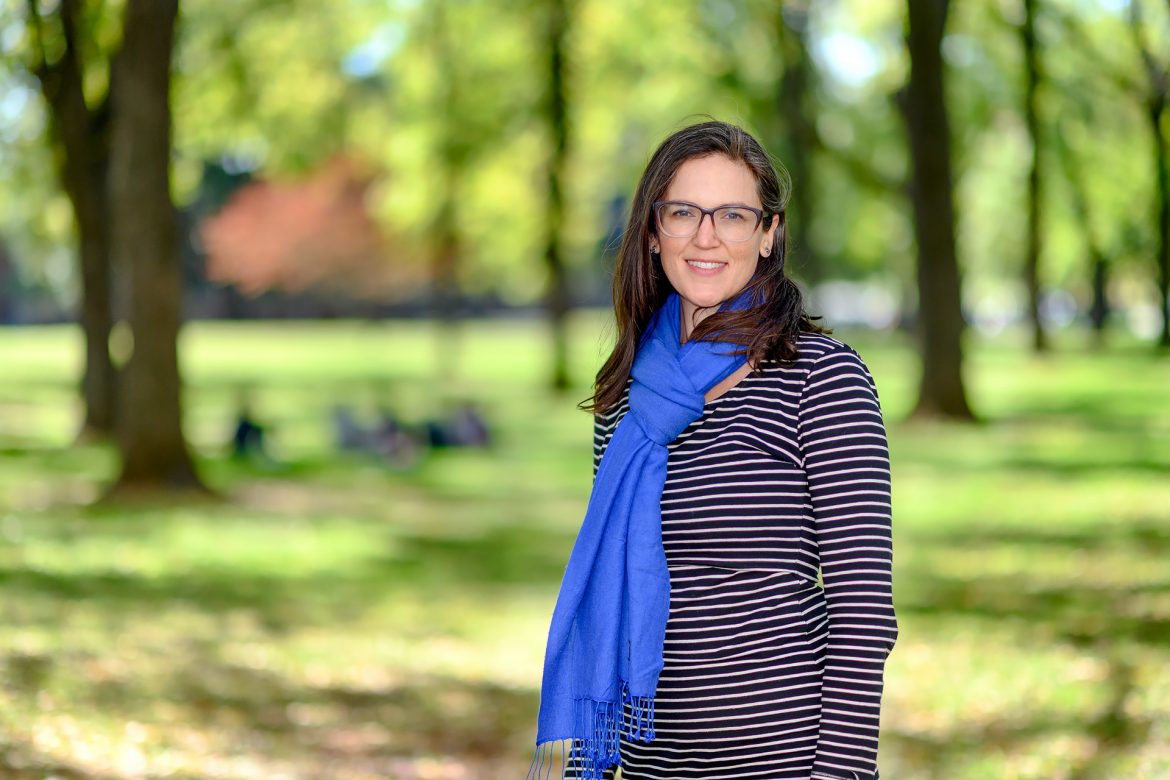True to her belief that “face time” with professors is the most important part of education, Molly Taylor-Poleskey employs certain practices that help facilitate a more comfortable class culture during the COVID-19 pandemic.
For example, one international, nontraditional student requested that Taylor-Poleskey, an assistant professor of history, teach a class he failed in the spring semester in person because he had difficulty with remote technology. This class has been meeting in the fall 2020 semester on the steps of the James Union Building with appropriate social distancing.
For this class, Taylor-Poleskey attaches a laptop to her tripod with a $6 device she purchased. This enables people who cannot attend the class in-person to attend via videoconference.
“I don’t require that the students show up at the time of the class,” Taylor-Poleskey says. “They can watch the Zoom recording later … I’m trying to offer maximum flexibility and also a lot of grace.”

Molly Taylor-Poleskey teaches her class outside in front of the James Union Building. (Photo: J. Intintoli)
Although all students might not be present during class time, Taylor-Poleskey takes roll call in her classes and checks in with each student individually with questions that show she is concerned about how each person is doing. This enables her to develop a sense of who each student is.
“I think that really matters because it’s also an icebreaker for the rest of class when I’m stopping to ask reflective questions,” Taylor-Poleskey says. “I feel like I’m getting a lot more engagement because we do know each other a little bit.”
Taking a cue from her yoga classes, Taylor-Poleskey also begins each class with an introduction in which she “sets the intention.” This is a brief moment for stating the purpose of each meeting, setting aside cell phones, and, while acknowledging distractions, not letting them interfere with the purpose of the class.
“I also discuss other strategies for being healthy during the pandemic and having strong study skills — use physical notes and things like that,” Taylor-Poleskey says. “Be sure you’re getting outside and taking breaks.”
Taylor-Poleskey says one student told her she really enjoyed that approach because she was feeling very scattered. The result is that students feel comfortable interrupting with great questions, making the class feel like a conversation, not a lecture.
“The lecture format has been criticized by so many as being hierarchical and not the best means of learning, but I find it very useful, especially if you’re integrating more interactive components like group exercises and primary source analyses,” Taylor-Poleskey says.

Molly Taylor-Poleskey faculty profile in Walnut Grove and in front of James Union Building. (Photo: J. Intintoli)
She hastens to add, however, that it’s only effective if the professor creates a “sacred space” of listening and develops that skill.
At the suggestion of one of her students, Taylor-Poleskey came to employ Slack, a type of communication software that enables students to separate into breakout rooms. After creating a workspace for the entire class, subspaces are created which students can enter in discussion groups.
Taylor-Poleskey says Slack runs equally smoothly on mobile phones, desktops, and other digital devices. She says it helps students answer other students’ questions so that they are not totally dependent on her.
One student had the negative experience of going into a breakout room with two other students who had logged on physically but were not participating. Taylor-Poleskey says she intends to correct this by creating bigger breakout rooms for more students and a greater diversity of students to participate in each room.
One advantage of the transition to remote and hybrid learning is the ability to welcome visitors to class who otherwise would require food, transportation, lodging, and honoraria. Two such visitors were a professor from Princeton University in Princeton, New Jersey, who spoke about his methods for historical research, and a person with a history degree who has worked for 10 years for Google in Cambridge, Massachusetts.
“He … talked about how he leverages his history skills of strong writing that’s clean, concise and persuasive; empathy, and context,” Taylor-Poleskey says.
Class lecturers such as these add both academic perspective and real-world experience to students’ overall perceptions that they might not receive otherwise.
In the fall 2020 semester, Taylor-Poleskey is teaching a remote graduate class; two in-person sections of senior seminar; and a survey course in U.S. history remotely.
— Gina Kerra Logue (gina.logue@mtsu.edu)


COMMENTS ARE OFF THIS POST